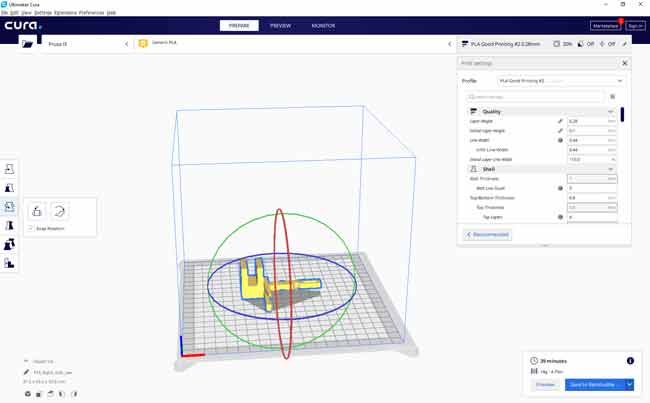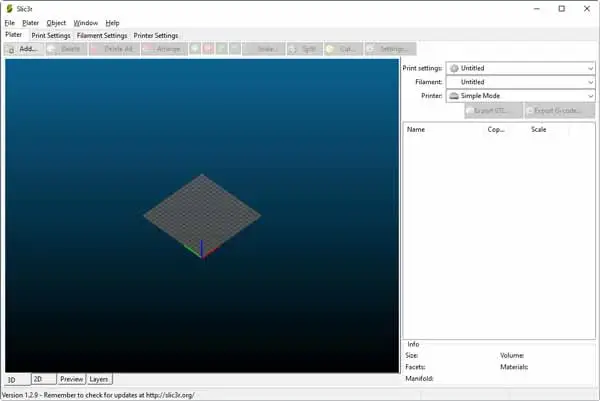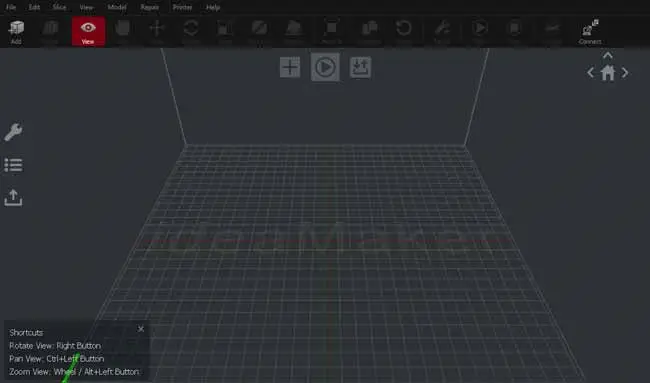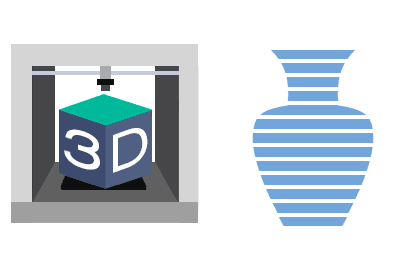We continue the entries dedicated to design for 3D printing by seeing what the Slicer is and why it plays a fundamental role in 3D printing.
In previous entries we had seen a basic introduction guide, programs for 3D drawing, an overview of the CAD programs available to make our 3D designs.
We had left off that, in one way or another, we had a triangulated file in STL format with the geometry we wanted to print.
But we had also said that our printer is “dumb” and does not understand 3D objects or STL formats, or anything at all. It only knows how to go to the X, Y, Z coordinates, and expel a certain amount of material.
Precisely here is where the Slicer (or “slicer”) comes into play. The Slicer calculates the intersections of the 3D object at the layer height for printing, and determines the sections it obtains. It divides it into “slices,” hence its name.

For each of these sections, it calculates the movements that the print head must make to fill each area. As simple and as complex as that. In a way, the Slicer is the equivalent of the “CAM program” of traditional CNC machines.
To do its job, the Slicer takes into account a large number of parameters. Speed, temperature, machine parameters, maximum dimensions, and material.
Therefore, with the Slicer we convert the 3D model into an STL file to the G-Code (which we will see in the next entry) that contains all the “programming” that the machine will perform.
It is evident that the role of the Slicer is fundamental in the 3D printing process. In the first place, obviously, because without it we could not print. But, in addition, the quality of the final print will depend on the processing done by the Slicer.
Of course, there are a large number of available Slicers, many of them free or even Open Source. Let’s see some of the main Slicers available.
Ultimaker Cura
The powerful and very popular Cura is undoubtedly the benchmark to beat. Developed by Ultimaker, Cura is Open Source and compatible with a large number of home printers.
Cura stands out for being suitable for both novice and expert users. Version after version, Cura presents significant evolution in both new features and user interface.

In general, the work it does is quite good, and the quality of the prints. It also estimates the printing time without too much deviation.
Without a doubt, your first choice as a Slicer and an almost essential program for 3D printing
Slic3r
Slic3r is another free Slicer program with a wide diffusion in the #Maker community. Some users think that Slic3r has a clearer interface with more options than Cura, (or at least better organized).

Although Cura has evolved version after version, so this advantage may not be so clear, it remains one of the community’s favorite Slicers.
IdeaMaker
We finish our options with IdeaMaker, a free Slicer from Raise3D, with less diffusion than the previous ones.

Although less known, IdeaMaker has advanced functions and, in general, provides very good results both in time and quality.
Conclusion
The slicer is a fundamental part of the 3D printing process, and the choice of one or the other depends on the quality and results we obtain in our prints.
We have seen three great Slicer options for 3D printing. The most common thing is to start with Cura, which has become the de facto standard. But we have seen that it is not the only available option. On the contrary, there are many Slicers available, many of them Open Source.
In the next entry we will continue with the topic of 3D printing, seeing what G-Code is. In the meantime, if you want to leave us a comment saying what your favorite Slicer is, you are welcome!
